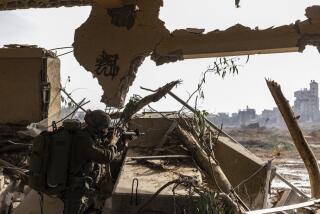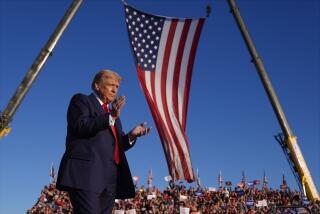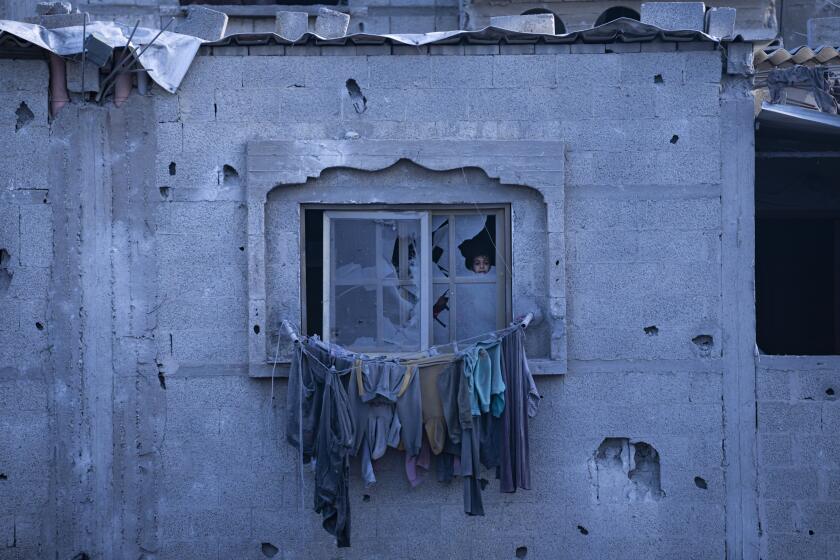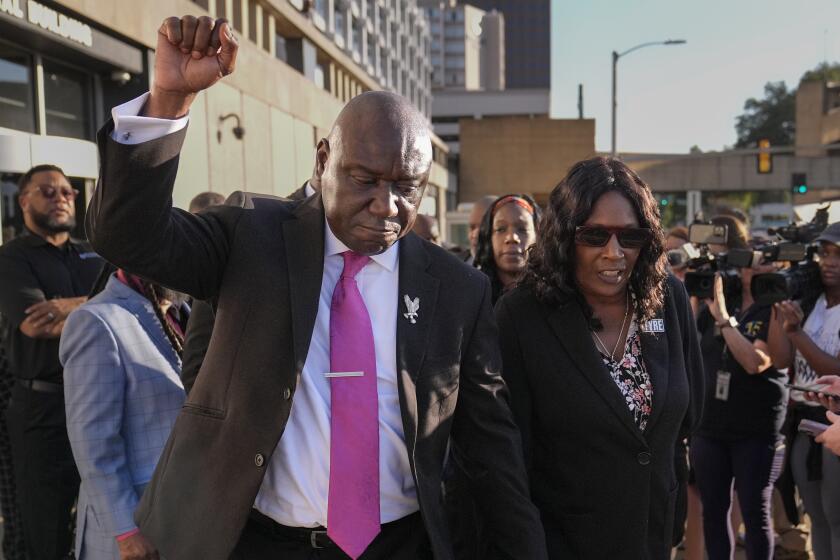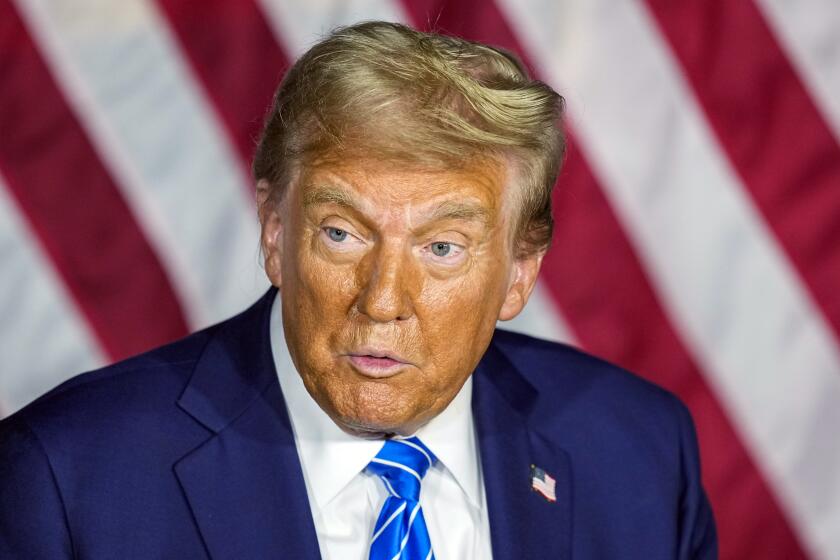Baker, Bessmertnykh to Speed START Treaty : Diplomacy: Pact on long-range weapons could clear way for a summit this month. But the timing is in doubt.
Secretary of State James A. Baker III and Soviet Foreign Minister Alexander A. Bessmertnykh met on Friday to speed up negotiations to complete a landmark treaty to destroy thousands of long-range nuclear weapons, but Baker declared that considerable work remained before the pact would be complete.
“There is still, in my view at least, a fair amount of work that has to be done before we will conclude a START agreement,” Baker said, referring to the Strategic Arms Reduction Treaty.
President Bush and Soviet President Mikhail S. Gorbachev had hoped to have a completed START accord to sign as the centerpiece of a U.S.-Soviet summit meeting by the end of this month.
But after a 2 1/2-hour meeting with Bessmertnykh, Baker sounded increasingly doubtful that the work could be completed in time for an early summit.
Asked whether the summit might be held later in the year, Baker said, “We don’t rule anything out, and we don’t rule anything in.” He said that he and Bessmertnykh had discussed the timing of a summit only “broadly.”
Nevertheless, both men said their governments had made a serious commitment to finish the negotiations as soon as possible.
“The two governments have decided to concentrate very actively to complete work on the START treaty,” Bessmertnykh said in a joint news conference in the courtyard of the Soviet mission here.
“The fact that we have come to Geneva with some prepared positions . . . is an indication of the serious intentions of the two sides,” he said.
Bessmertnykh said they had exchanged “new ideas” on how to conclude the treaty, which has been under negotiation since the early 1980s--but which has been held up since last year by a series of largely technical issues.
“Substantive ideas can be very, very technical,” Baker said. “And technical ideas can be very, very substantive and very important.”
Baker gave the Soviet foreign minister a letter from President Bush for Gorbachev containing the U.S. ideas, but he refused to describe them to reporters.
“It evidences the commitment of President Bush to working hard to resolve the issues that remain in the strategic arms agreement,” he said.
Bessmertnykh praised the letter, saying it “contained several new ideas.”
“The Soviet side informed the secretary of state that we too have some fresh thoughts,” he added.
The two men also discussed ways to speed up the remaining talks, they said. Bessmertnykh said they agreed to “upgrade” their negotiating teams and to convene teams of experts to negotiate several technical issues, including “data denial”--the conditions of making data from missile test flights available to each other.
Asked about their apparently somber mood, Bessmertnykh said: “We are not less optimistic at all. We are in a working mood. We really have started the job, and that is why we are so serious.”
The START treaty would require the United States and the Soviet Union to destroy about one-third of their long-range nuclear arsenals, including about half of the most dangerous weapons, their ballistic missile warheads.
The most significant unresolved issue, officials said, is called “downloading”--the practice of removing some of the nuclear warheads from missiles that are equipped to carry more than one warhead.
U.S. arms control experts came up with the concept of “downloading” as a quick, cheap way to turn multi-warhead missiles--which are considered the most dangerous and vulnerable in each country’s arsenal--into less-dangerous single-warhead missiles.
But “downloading” creates a new danger. It would leave each side with as many as 2,000 “empty spaces” on missiles. Some U.S. officials argued that if the Soviet Union ever decided to violate the pact, it could quickly fill the empty spaces with new warheads--and thus achieve a nuclear advantage over the United States.
The issue created a rift in the Bush Administration, with national security adviser Brent Scowcroft arguing for tougher limits and Baker seeking more flexibility, according to Administration officials.
Baker left Washington on Wednesday for a meeting of the North Atlantic Treaty Organization in Copenhagen, not knowing whether the Administration would resolve its disagreements in time for him to see Bessmertnykh. But by that evening a compromise was reached, and the National Security Council issued new guidelines for the negotiations on Thursday.
Baker indicated Friday that some disagreements within the Administration remain unresolved. But he added: “Any of those that might remain--and they are not significant in my view--will be satisfactorily worked out as we move toward the end-game here.”
The Numbers of START
The goal is to reduce the nuclear arsenals of each superpower to 6,000 “accountable” nuclear devices. Here are current and potential levels by the late 1990s, including intercontinental ballistic missiles (ICBMs), submarine-launched ballistic missiles (SLBMs), bomber-carried weapons and sea-launched cruise missiles (SLCMs) :
CURRENT LEVELS POTENTIAL LEVELS U.S. SOVIET U.S. SOVIET ICBMs 2,450 6,665 1,444 3,236 SLBMs 5,024 3,706 3,456 1,664 BOMBERS* 4,480 1,155 4,580 2,260 SLCMs 350 100 880 880 TOTALS 12,304 11,626 10,360 8,040
*Includes bombs, short-range missiles and air-launched cruise missiles
Source: Arms Control Assn.
More to Read
Sign up for Essential California
The most important California stories and recommendations in your inbox every morning.
You may occasionally receive promotional content from the Los Angeles Times.

